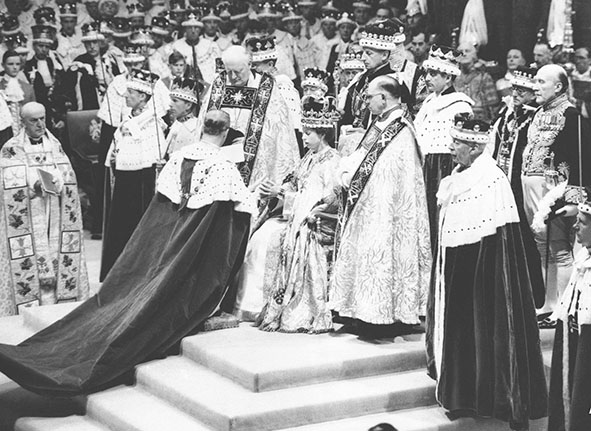UNITED KINGDOM: Queen Elizabeth II has died at the age of 96, ending her 70-year reign, the longest in British history. The Royal Family confirmed her death on Thursday evening, 8 September, saying she had died peacefully at Balmoral Castle, her estate in Scotland. Over her seven-decade rule, she served as a constant presence in a world that was rapidly changing around her.
Queen Elizabeth II was born Elizabeth Alexandra Mary Windsor on 21 April 1926, the first child of Albert, Duke of York, and Duchess Elizabeth Bowes-Lyon. Upon the death of her grandfather, King George V, in 1936, her uncle ascended the throne as King Edward VIII.
However, King Edward abdicated from the role in December of the same year, choosing to marry an American woman, Wallis Simpson, who was twice divorced and deemed an unacceptable choice on the grounds of politics and religion. With no children of his own, Edward’s younger brother and Elizabeth’s father, Albert, ascended the throne as King George VI, although he had been reluctant to assume the position. This also meant that Elizabeth was now the heir presumptive, a position she had never previously expected.
Elizabeth first met her future husband, Prince Phillip of Greece and Denmark, in 1934, however, it was not until a third meeting at the Britannia Royal Naval College in 1939, that she began to take an interest in him. At the time, Phillip, her third cousin, was an 18-year-old cadet that helped escort Elizabeth and her sister, Princess Margaret, while touring the college grounds. The two exchanged letters throughout the years of World War II, and two years after the war came to an end, they were finally married in 1947 when Elizabeth was 21 years old.
World War II had taken a toll on King George VI’s health, which was only made worse by his heavy smoking. He developed lung cancer and was terminally ill. As his condition continued to deteriorate, Elizabeth began to take on more royal duties. Elizabeth and Philip embarked on an overseas tour in January 1952, where her father came to see them off at the airport, against medical advice. This would be his last public appearance and the last time Elizabeth saw her father, as only a month later, he would pass away on 6 February 1952.
One year later, on 2 June 1953, Elizabeth II acceded the throne at the age of 25. For the first time, her coronation was also broadcast on television, and millions tuned in to watch the Queen take her oath.
Elizabeth became Queen at a time when the British Empire had largely come to an end and Britain’s position in the world was changing. Over her seven-decade rule, she navigated shifting public attitudes towards the Royal Family and the archaic institution it represented in increasingly modern times.
One of the Queen’s most difficult years was in 1992, dubbed her “annus horribilis,” which saw a series of scandals and disasters afflict the Royal Family, including Prince Andrew’s separation from his wife Sarah, Princess Anne’s divorce, public exposure of Prince Charles and Princess Diana’s unhappy relationship, and a huge fire at the Queen’s favorite residence, Windsor Castle, at the end of the year.
The death of her former daughter-in-law, Diana, Princess of Wales, in 1997 following a car accident in Paris, shook the whole world and took another massive blow to the Royal Family and Queen’s image. There was significant public anger at the Queen’s stilted response to the death, as she appeared to show reluctance in providing much focus on the tragedy.
This time of crisis eventually passed and in 2012 the Queen marked her Diamond Jubilee, which saw hundreds of thousands of people celebrating in the United Kingdom. In 2015 she officially became the longest-reigning monarch in British history.
Queen Elizabeth’s reign continued to see new strains and pressures in the following years, including Prince Andrew’s involvement with convicted American sex offender Jeffrey Epstein, Prince Harry’s ‘stepping back’ from his senior royal duties and increasing disillusionment with royal life, and her husband Prince Phillip’s passing in 2021.
In 2022, she celebrated her platinum jubilee and 70 years of reign, making her the first British Monarch to ever celebrate this milestone. Even as the British Royal Family no longer embodied the same strength it did at the beginning of her reign, Queen Elizabeth remained dedicated to her duty to the nation until the very end. The length of her service coincided with that of 15 British Prime Ministers, 14 U.S. Presidents and seven popes.
Her final major act as Queen was on Tuesday, 6 September, when she accepted Boris Johnson’s resignation from the role of Prime Minister and asked his successor, Liz Truss, to form a new government, at Balmoral Castle where she had been residing since July.




























